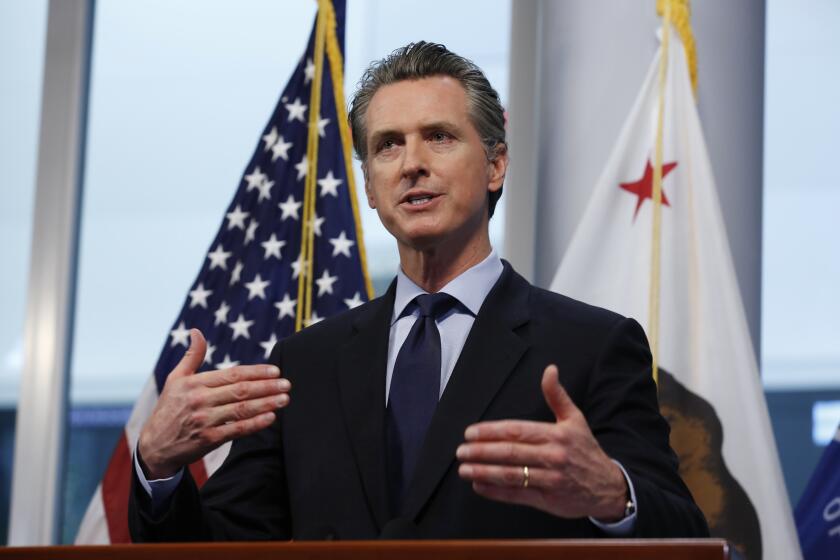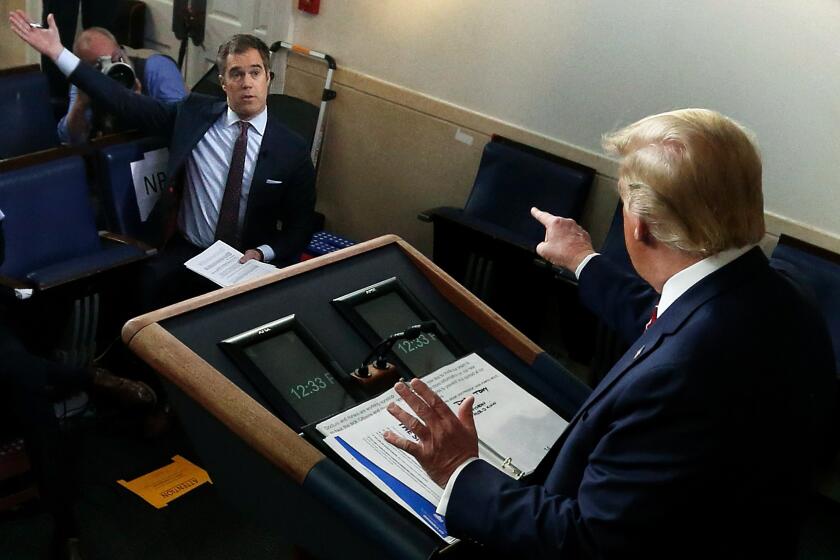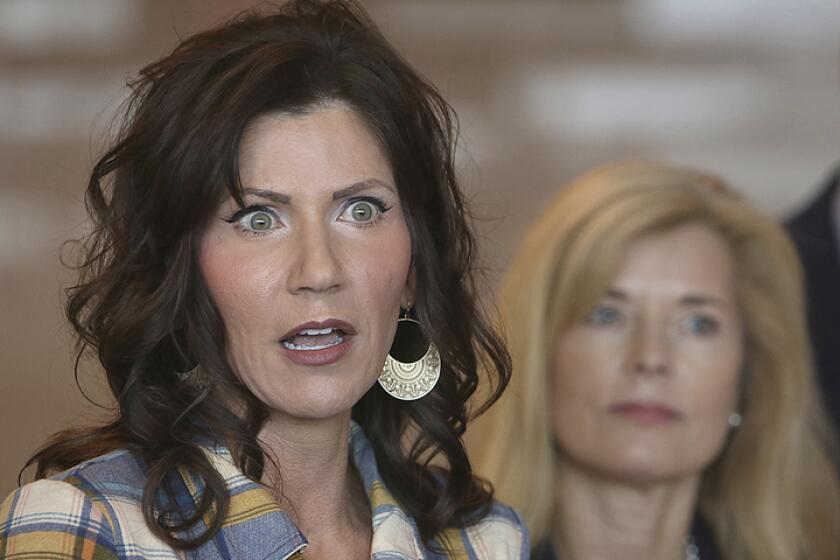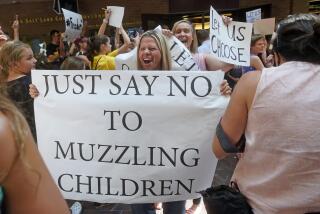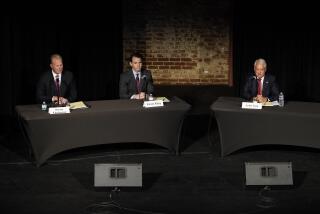Who knows best? Mayors collide with governors over coronavirus lockdown
Heidi Harmon, the mayor of San Luis Obispo, wants a limited reopening. Shirley Sessions, the mayor of Tybee Island, Ga., wants things to stay closed.
A continent apart, the two stand astride the latest fault line to emerge as the nation struggles with the greatest health and economic crisis it has faced in generations: a growing split between governors and local leaders on when to end the country’s self-imposed shutdown.
Both are at odds with their state’s governor.
“In the case of San Luis Obispo, we are unique,” said Harmon, a sentiment that Sessions echoed 2,600 miles away.
“We know what’s best for our communities,” Sessions said.
Their contrasting goals reflect the tension that underlies the growing conflict, whether it’s local officials calling for Democratic governors to ease up or mayors urging Republicans governors to clamp down. At bottom, the question is whether the fight against a deadly virus with no regard for physical or geographic lines can be waged with anything other than a one-size-fits-all approach.
Unlike the red-blue division that colors animosities between the White House and Congress, or the differences between the heads of Republican-led states and their Democratic counterparts, this disagreement doesn’t necessarily cleave along the usual partisan lines. There are Republicans balking at the actions of Republicans, Democrats differing with Democrats, and local officials with no party affiliation taking issue with Democrat and Republican alike.
Harmon is a fan of Gov. Gavin Newsom, her fellow Democrat, and hastens to say she’s not seeking to throw the doors wide open to her town and return to life as it was pre-pandemic.
“This is opening up in a way that has a lot of guardrails and guideposts to ensure people’s health and safety, that both live here and may come through San Luis Obispo,” Harmon said.
Newsom said that while areas across the state have been affected differently by the pandemic, the “virus knows no jurisdiction, knows no boundaries” and could easily spread into neighboring counties if they ease restrictions prematurely.
Sessions, a nonpartisan, knows her resort community is suffering economically, but worries that Republican Gov. Brian Kemp’s back-to-business edict will flood her coastal haven with visitors importing COVID-19.
“Normally we welcome tourists. But this is about safety,” she said.
The conflict comes as leaders in statehouses and city halls across the country increasingly step in to fill the void left by a fractiously divided Congress and an erratic President Trump.
Unlike the cease-fire that followed 9/11, Democrats and Republicans attack amid the coronavirus crisis.
Part of the disagreement reflects the tensions between lawmakers who may represent people with very different ways of thinking, which, as UC Merced’s Jessica Trounstine pointed out, is nothing new.
“Those tensions exist in a lot of different policy areas,” said Trounstine, an expert on urban politics. She noted, for instance, the divergence between lawmakers in Sacramento and some local officials over California’s “sanctuary state” law protecting immigrants without legal residency.
Now the stakes are even higher, given the grave peril the novel coronavirus poses to lives and livelihoods.
And, if anything, the chasm between governors and local lawmakers is growing as the country increasingly splits between cities and suburbs that lean Democratic and rural and exurban areas that tilt Republican.
“To the extent that both minority voters and highly educated professionals (health care workers) are ... increasingly Democratic voters, urban mayors have both a policy and a political incentive to emphasize the health implications of the crisis,” Eric Heberlig, a University of North Carolina at Charlotte political scientist who has studied municipal issues, wrote in an email.
“Governors of states in which the plurality of [the vote] is not urban, minority or professional don’t have as much incentive to weigh health concerns more heavily than economic concerns,” he said.
Some of the friction — never mind the crises at hand — may also stem from tetchy personal relations.
In Oregon, where Portland Mayor Ted Wheeler pressured Gov. Kate Brown to take bolder action, the two Democrats are past political rivals. New York Gov. Andrew Cuomo took issue when New York City Mayor Bill de Blasio, a fellow Democrat and longtime antagonist, issued a stay-at-home order. Several days later, Cuomo locked down the entire state.
Hard feelings between Las Vegas Mayor Carolyn Goodman, a Democrat turned independent, and Nevada’s Democratic Gov. Steve Sisolak date from his time on the Clark County Commission, which oversees the Strip. She has used a series of national TV interviews to call for the city’s reopening, though it is questionable how much Goodman helped her cause by, in effect, offering up Las Vegas as test case for loosening the country’s stay-at-home restrictions.
“We’ve survived the West Nile and SARS, bird flu, E. coli, swine flu, the Zika virus,” she said on MSNBC, blithely suggesting businesses would be forced to close if enough people took ill.
Republican governors of eight states have not issued stay-at-home orders, even as coronavirus outbreaks spread at factories, long-term care facilities and prisons.
Perhaps the main reason for the rift between state executives and city hall is the fact that governors represent a much larger area and broader, more diverse set of interests than mayors.
“We recognize 58 counties, 480 different parts of the state, impacted differently,” Newsom, a former San Francisco mayor, said during one of his daily coronavirus briefings. “But also the fact that we are one state, and the impact and the collective responsibility we have to one another — neighboring counties, neighboring cities — also must be considered.”
He has balked at loosening statewide restrictions he put in place more than a month ago.
Trounstine, for one, sides with the governor. While the country is grounded in the principle famously enunciated by Thomas Jefferson, “the government closest to the people serves the people best,” she believes these times are different.
“In this particular situation the virus doesn’t care who your mayor is, or where the boundaries of your city end,” Trounstine said. “We can’t make policy at such a local level right now because the problem crosses borders. For the public good, it makes sense to make policy at the highest level possible.”
While much about the coronavirus remains unknown, one thing seems likely.
As the death toll and economic damage from the COVID-19 pandemic continue to mount, the debate over who can best respond — the governor or officials at the local level — will grow more acute.
More to Read
Get the L.A. Times Politics newsletter
Deeply reported insights into legislation, politics and policy from Sacramento, Washington and beyond. In your inbox three times per week.
You may occasionally receive promotional content from the Los Angeles Times.

